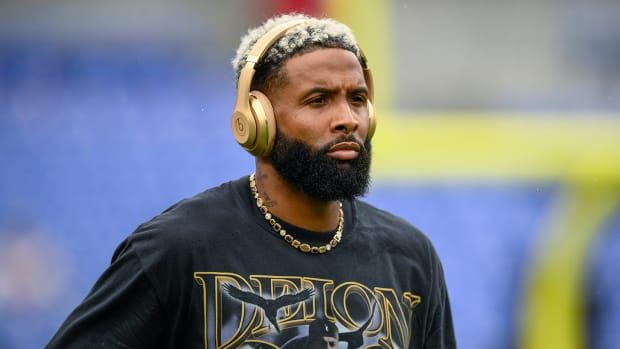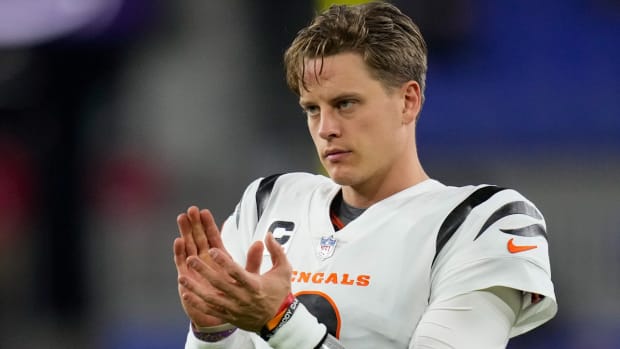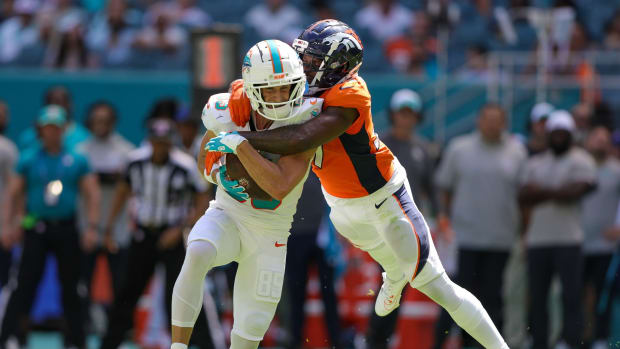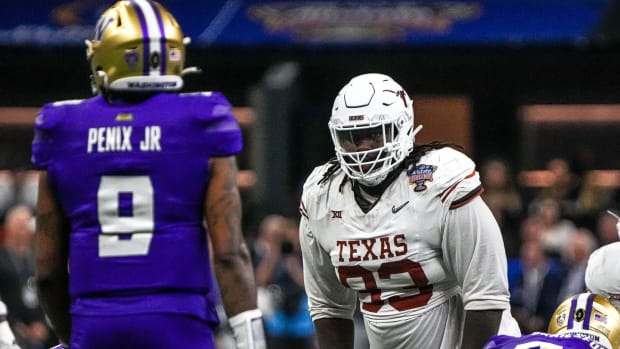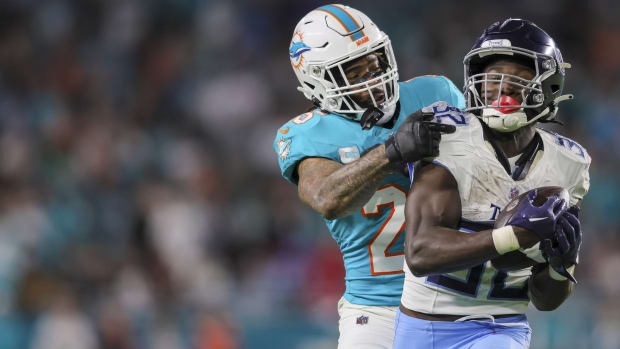The 2024 NFL Draft is this month.
For the first time since 2021, the Miami Dolphins have a first-round pick. The team will pick No. 21 overall, and they have pick No. 55 in the second round before taking the third and fourth rounds off.
They’ll get back on the clock with pick No. 158 in the fifth round and finish things off with picks 184, 198 and 241.
This series of draft profiles is intended as an introduction to certain prospects so fans are familiar with a number of options and why they make sense for the Dolphins. We’ll start this series by focusing on players who Miami could select at No. 21.
Graham Barton, OL, Duke
Basic Background
Graham Barton was forced onto the field as a freshman in 2020 after two of Duke’s centers went down with an injury. Barton appeared in six games, starting in five. After that, he became a mainstay on Duke’s line.
He started in 34 straight games to begin his career. His streak ended this past season when he missed three games with an injury. However, Barton racked up 39 career starts, with 34 coming at left tackle and five at center.
Barton is a two-time All-America and first-team All-ACC honoree, making both teams this past season.
Barton’s high school background isn’t as impressive as some other offensive linemen Miami could pursue in Round 1. He was a consensus three-star recruit out of Ravenwood High School in Tennessee.
He does have the coveted multi-sport background, but it’s the one most offensive linemen have (wrestling). Barton actually lettered in lacrosse for two straight years at Ravenwood.
Pros of Barton’s Game
Barton’s strengths center around his movement skills, versatility and physical demeanor.
Starting with his movement skills, Barton kicked out to left tackle following his freshman season and didn’t look out of place. Although many believe he’s better off at guard or center, Barton has the foot speed and quickness to mirror speed rushers on the outside.
In the running game, Barton can get outside to seal off lanes or climb to the second level to clean up second-level defenders.
He did test at the NFL Combine, but he produced some impressive numbers at his pro day. He posted a 4.97-second 40-yard dash, a shuttle time of 4.55 seconds, and a 3-cone time of 7.31 seconds, good for a 9.99 (out of 10) Relative Athletic Score.
Barton doesn’t move quite that well on tape, but he’s undoubtedly an NFL-level athlete, regardless of where he lines up.
Many players with Barton’s movement skills are considered “finesse” prototypes. However, Barton does a nice job using his movement skills to generate push in the running game and punish overconfident pass rushers.
His powerful lower body allows him to drive block defenders into the ground fairly often. Although his natural strength is only sufficient, Barton’s effort and demeanor give him the ability to punch above his weight.
As mentioned above, Barton has extensive experience playing tackle and started five games at center during his freshman season. Unlike other tackles in this class, Barton has actual tape to evaluate at other positions.
Nobody is guessing that Barton can covert to the inside. There’s real proof he can play there effectively.
His position versatility is a calling card, but he’s also scheme versatile. He does his best work on zone concepts, but getting him out into space as a puller in gap concepts is a good way to harness his aggressiveness.
Cons of Barton’s Game
Barton doesn’t have a lot of glaring weaknesses in his game. He’s incredibly well rounded, making it hard to poke major holes in his game. That said, he could improve a few areas in the NFL.
He can be a little too aggressive, leading to some balance concerns. Some reps ended with him on the ground because he got his shoulders over his toes too much. It’s better to be overly aggressive than not, but he could dial it back sometimes.
The other concern with his film is how he deals with power rushers. His anchor is only average, and there’s a good argument for him to add some core strength. It’s not to the point it’s a liability, but many of his losses came against power rushes.
Those are the small concerns on his tape, but his physical profile raises a larger concern. Barton’s arm length and hand size just aren’t good for an NFL offensive lineman. His arm length ranks in the 29th percentile, and his hand size is 14th.
Those percentiles are for interior offensive linemen — not tackles.
Even if Barton is kicked inside at the next level, he’ll still struggle with players getting into his chest more than someone with a little more size. Combine that with Barton’s average anchor, and you start to see why he couldn’t pan out.
HOW GRAHAM BARTON FITS THE MIAMI DOLPHINS
Barton’s fit with the Dolphins is pretty seamless. He’s an excellent mover, making him ideal for the Dolphins’ zone-heavy scheme. Additionally, he provides the mean streak that the team has been looking for in recent seasons.
His position versatility means Miami could always put its best five offensive linemen on the field. He could fill Robert Hunt’s spot at guard, serve as a backup to Terron Armstead at left tackle or play center instead of Aaron Brewer.
All of that is incredibly appealing, and the offensive line is still one of the team’s biggest needs despite its work in free agency to plug holes.
The question with Barton is whether an interior offensive lineman is worth taking at No. 21 overall. There’s a fair argument the Dolphins could address guard/center in the second round. Center, specifically, has several worthwhile options that are expected to go outside the first round.
If Miami views Barton as its left tackle of the future, that changes things. Armstead’s injury history and age make selecting a tackle in Round 1 very defensible, even if that player has to play guard in 2024.
Given Barton’s length limitations, it’s hard to imagine Miami views him as their left tackle of the future. There’s nothing wrong with taking a starting center or guard in the first round, but there’s also a good chance players at more important positions will be available.
Perhaps Barton becomes an option if the Dolphins trade back closer to the end of Round 1. The Dolphins' offensive line signings aren’t overly impressive, but they could be good enough to keep them from reaching on a player who doesn’t play a premium position in Round 1.
Barton wouldn’t be a bad pick by any stretch, but taking him could mean passing up on a difference-making pass rusher or franchise left tackle.

